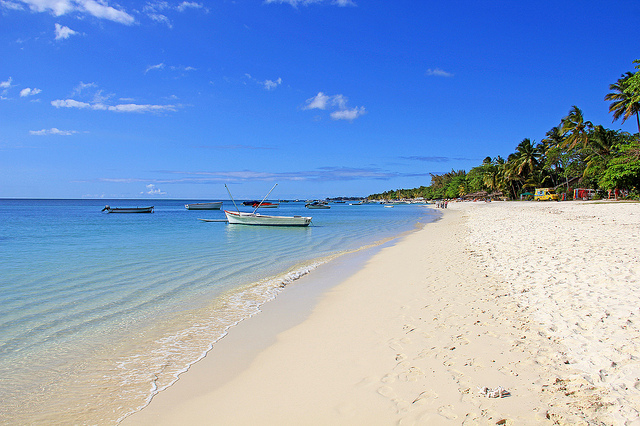MI weekly selection #12

Zircon grains came from ancient continent
Grains of zircon found on the island of Mauritius may have come from the crust of an ancient continent beneath the Indian Ocean. The grains formed almost 2 billion years ago, but the island is only 65 million years old.
Trond H. Torsvik, Hans Amundsen, Ebbe H. Hartz, Fernando Corfu, Nick Kusznir, Carmen Gaina, Pavel V. Doubrovine, Bernhard Steinberger, Lewis D. Ashwal & Bjørn Jamtveit (2013) A Precambrian microcontinent in the Indian Ocean Nature Geoscience DOI: 10.1038/ngeo1736
Insects can see “glow” from carnivorous plants
Carnivorous plants emit ultraviolet light that “glows” in the vision of insects and attracts prey. This glow, previously unseen and unknown by humans, “is the most distinct fluorescent emission found in the plant kingdom,”.
National Geographic | Weird & Wild
Rajani Kurup, Anil J. Johnson, Sreethu Sankar, Abdul A. Hussain, Chellappan Sathish Kumar, Sabulal Baby (2013) Fluorescent prey traps in carnivorous plants Plant Biology DOI: 10.1111/j.1438-8677.2012.00709.x
A robot bat wing for enhanced maneuverability
A robotic bat wing that could lead to the development of a flapping aircraft. The 8-inch wing is based on the lesser dog-faced fruit bat. A bird has three wing joints at the shoulder, elbow and wrist. Bats also have several joints within each of the fingers, providing up to 25 joints in the wing, all of which allow it to change the shape of the wing dramatically, for more maneuverability and fine control over flight.
Joseph W Bahlman, Sharon M Swartz and Kenneth S Breuer (2013) Design and characterization of a multi-articulated robotic bat wing Bioinspiration & Biomimmetics DOI: 10.1088/1748-3182/8/1/016009
Human migration patterns could be revealed in lice genes
A new study of lice genes could help trace human migration patterns. Lice found in Honduras are similar to Asian lice, while lice found in New York are closely related to those in Europe.
Ascunce MS, Toups MA, Kassu G, Fane J, Scholl K, et al. (2013) Nuclear Genetic Diversity in Human Lice (Pediculus humanus) Reveals Continental Differences and High Inbreeding among Worldwide Populations. PLoS ONE DOI:10.1371/journal.pone.0057619
New method to create hydrogen from methanol
A new ruthenium-based catalyst can create hydrogen from methanol, which can be stored and transported easily. The process is still in early stages, but scientists hope it can be developed to one day power fuel cells for computers, mobile phones and, perhaps, cars.
Nielsen M, Alberico E, Baumann W, Drexler HJ, Junge H, Gladiali S, Beller M (2013) Low-temperature aqueous-phase methanol dehydrogenation to hydrogen and carbon dioxide Nature DOI:10.1038/nature11891